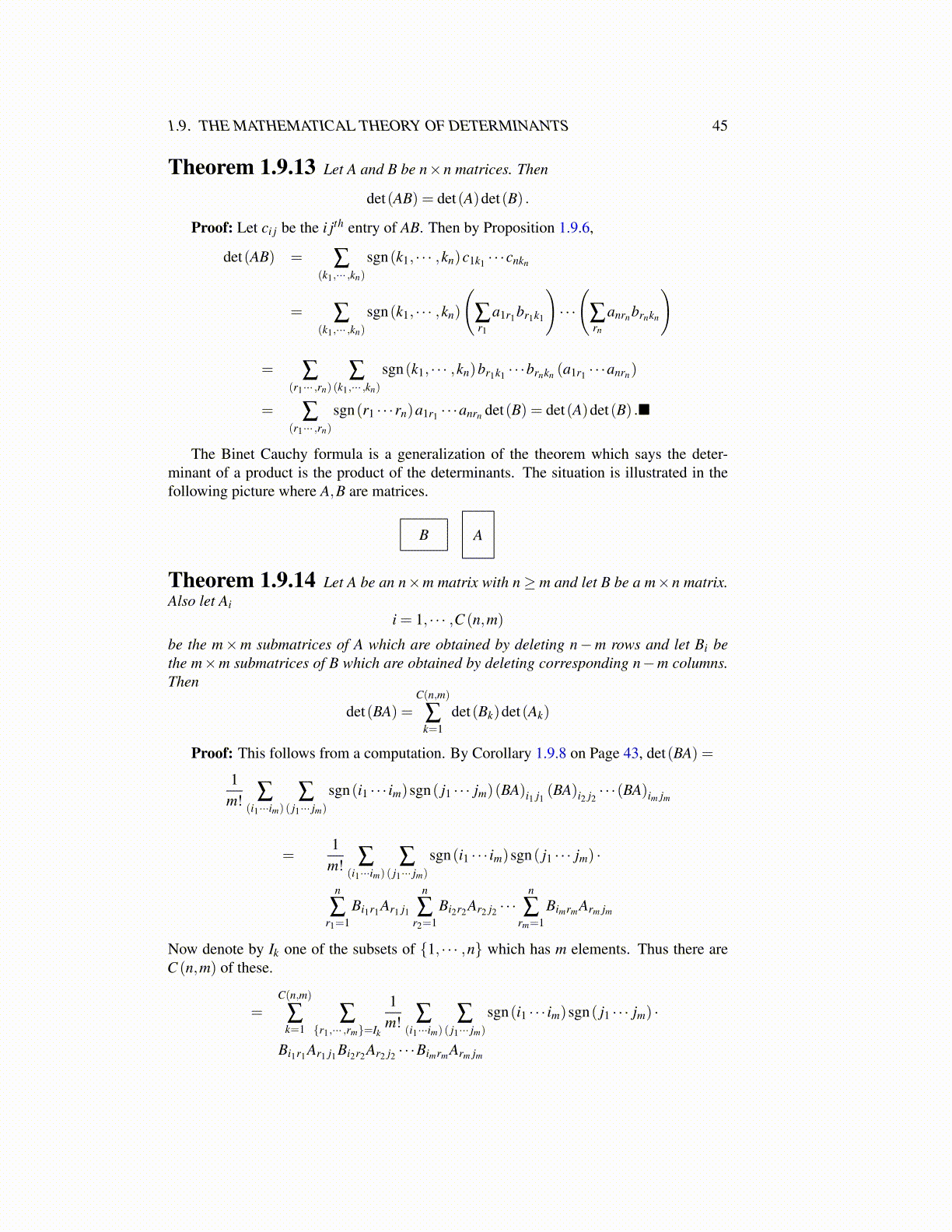
1.9. THE MATHEMATICAL THEORY OF DETERMINANTS 45
Theorem 1.9.13 Let A and B be n×n matrices. Then
det(AB) = det(A)det(B) .
Proof: Let ci j be the i jth entry of AB. Then by Proposition 1.9.6,
det(AB) = ∑(k1,··· ,kn)
sgn(k1, · · · ,kn)c1k1 · · ·cnkn
= ∑(k1,··· ,kn)
sgn(k1, · · · ,kn)
(∑r1
a1r1br1k1
)· · ·
(∑rn
anrnbrnkn
)
= ∑(r1··· ,rn)
∑(k1,··· ,kn)
sgn(k1, · · · ,kn)br1k1 · · ·brnkn (a1r1 · · ·anrn)
= ∑(r1··· ,rn)
sgn(r1 · · ·rn)a1r1 · · ·anrn det(B) = det(A)det(B) .■
The Binet Cauchy formula is a generalization of the theorem which says the deter-minant of a product is the product of the determinants. The situation is illustrated in thefollowing picture where A,B are matrices.
B A
Theorem 1.9.14 Let A be an n×m matrix with n≥ m and let B be a m×n matrix.Also let Ai
i = 1, · · · ,C (n,m)
be the m×m submatrices of A which are obtained by deleting n−m rows and let Bi bethe m×m submatrices of B which are obtained by deleting corresponding n−m columns.Then
det(BA) =C(n,m)
∑k=1
det(Bk)det(Ak)
Proof: This follows from a computation. By Corollary 1.9.8 on Page 43, det(BA) =
1m! ∑
(i1···im)∑
( j1··· jm)sgn(i1 · · · im)sgn( j1 · · · jm)(BA)i1 j1 (BA)i2 j2 · · ·(BA)im jm
=1
m! ∑(i1···im)
∑( j1··· jm)
sgn(i1 · · · im)sgn( j1 · · · jm) ·
n
∑r1=1
Bi1r1Ar1 j1
n
∑r2=1
Bi2r2Ar2 j2 · · ·n
∑rm=1
BimrmArm jm
Now denote by Ik one of the subsets of {1, · · · ,n} which has m elements. Thus there areC (n,m) of these.
=C(n,m)
∑k=1
∑{r1,··· ,rm}=Ik
1m! ∑
(i1···im)∑
( j1··· jm)sgn(i1 · · · im)sgn( j1 · · · jm) ·
Bi1r1 Ar1 j1Bi2r2Ar2 j2 · · ·BimrmArm jm